The Latest from TechCrunch |  |
| Daimler Takes A 10 Percent Stake in Tesla Motors. Where’s My Electric Benz? Posted: 19 May 2009 07:46 AM PDT
Silicon Valley electric car manufacturer Tesla Motors got another shot in the arm today from German auto giant Daimler, which took a 10 percent stake in the company and expanded its partnership with Tesla to equip future Mercedes-Benz vehicles with electric lithium-ion batteries. Mercedes has been testing Tesla’s batteries in a fleet of 100 smart cars, and is already moving into limited production. But with this agreement, Mercedes now expects to roll out its first battery-powered Mercedes-Benz in 2010, and offer battery-powered vehicles for all of its models by 2012. The amount invested was not disclosed, but even more valuable to Tesla is the vote of confidence from one of the world’s leading auto companies. In a press release, Daimler proclaims: “Tesla is the only production automaker selling a highway capable electric vehicle in North America and Europe.” The money will no doubt help as well, since Tesla still needs a few hundred million dollars to produce its own $50,000 Model S, which is half the price of its first car, the Tesla Roadster. The company is still applying for $350 million in government loans to get the Model S into production, but it looks like Mercedes will have at least its B-class cars on the road first. But as I suggested a year ago, Tesla’s real business may be in supplying the electric drive trains for other vehicles. The Roadster and Model S might just turn out to be really expensive demos. In a TechCrunch poll I inserted into that post (and again below), 77 percent of you agreed. I wonder if Mercedes has an exclusive license to Tesla’s battery technology, at least for a few years. (Update: Tesla says there is no exclusivity. According to spokesperson Rachel Konrad, “This investment obviously establishes a very close relationship between the two companies, but Tesla still plans to continue with its strategy of growing its powertrain business through sales of EV components. This investment does not preclude Tesla from growing such relationships with other automotive OEMs.”) Crunch Network: MobileCrunch Mobile Gadgets and Applications, Delivered Daily. |
| AdaptiveBlue Enhances Sticky Web Browser Companion Glue With API Posted: 19 May 2009 07:45 AM PDT
This provides third-party developers with a way to connect to and tap into the databases and semantic recognition engine the company has been building over the past few months. Glue essentially leverages information that already exists inside Web pages, and enables users to interact with things like books, music and movies from a toolbar layered on top of the pages in a frame when browsing with Firefox. It tells you more contextually relevant things about what you’re browsing, and also lets you interact with friends or unknown people who also visited, liked, or purchased those things. With the API, developers can dive into the information that’s been pulled together by the Glue add-on over time: things that a particular user has displayed an interest in since he or she installed the extension, but also lists of users that liked a specific book, music album or movie. More on the surface, the API can be used to fetch information from ‘the Glue activity stream’, which shows a continuous influx of semantic data generated by its users. But the most interesting use for the API as far as I’m concerned is the ability to link to a certain object on any Glue site and receive structured information about it straight away. I can see a lot of potential for other web services to integrate that information into their own tools. Finally, the interactive features Glue users enjoy from the toolbar (think likes, comments and replies) can henceforth be built into third-party applications as well. Developers, go check it out and let us know what you can come up with. Don’t forget to tell AdaptiveBlue about your app(s) either: the company is running an API launch contest which gives you the chance to win some prizes and swag in return for the cool stuff you create with their data.
(Image from Webmonkey) Crunch Network: CrunchBase the free database of technology companies, people, and investors |
| The Road To The Real Jesusphone: Why Is Sprint Launching Two Days Before WWDC? Posted: 19 May 2009 06:53 AM PDT  For those of you who haven't noticed, the Pre will launch two days before the WWDC keynote, traditionally a time of great nerdgasm when Apple announces some new products but, more importantly, has been recently been announcing new iPhone hardware and/or software. The Steve-less Steve-note will happen on June 8 while the Pre will excite and entice us on June 6. There are three reasons Sprint and Palm could have chosen this date. The first reason is the most cynical: if they launch a dog the news cycle will quickly turn to Apple and they will be spared the sad and steady clamor of angry Palm zealots. Their stock price will fall, sure, but investors will move on from their sad stink of failure and instead work on Apple. Then they'll clean out their desks and go home. For those of you who haven't noticed, the Pre will launch two days before the WWDC keynote, traditionally a time of great nerdgasm when Apple announces some new products but, more importantly, has been recently been announcing new iPhone hardware and/or software. The Steve-less Steve-note will happen on June 8 while the Pre will excite and entice us on June 6. There are three reasons Sprint and Palm could have chosen this date. The first reason is the most cynical: if they launch a dog the news cycle will quickly turn to Apple and they will be spared the sad and steady clamor of angry Palm zealots. Their stock price will fall, sure, but investors will move on from their sad stink of failure and instead work on Apple. Then they'll clean out their desks and go home. |
| Buzzd Unveils Location-Based Entertainment Guide For The BlackBerry Posted: 19 May 2009 05:54 AM PDT
buzzd, a location-based city guide and social network, has launched a native app made for BlackBerry smartphones, which brings many features of its mobile Web version to a native mobile application. The network was one of the recipients of the first round of investments from the BlackBerry Partners Fund (similar to Facebook’s fb Fund) last October. Previously only available via a mobile web browser, buzzd has also launched a companion website (for a computer browser) that offers the same information. buzzd’s app answers the question, "What's going on around me right now?” Buzzd will tell you which bands are playing at local bars, the location of a four-star eatery, which bar is most popular and other similar information. The interface lets the user share information with others on buzzd, so people can setup their own social networks. With this app, users can browse and search continuously updated event feeds, which include pricing, location, and event details, and access ratings and reviews on restaurants and bars. buzzd aggregates information from other event and review sites including Citysearch, Flavorpill, Time Out, MyOpenBar, last.fm, and Clubvibes. User-generated feedback from the buzzd community for "real-time" activity about events, restaurants and bars is also included in the mashup of information. The application also allows you to automatically add events to your Blackberry Calendar, add venues to your Blackberry contacts, broadcast updates from buzzd to Twitter, and features integration with maps to provide you exact locations of venues. Instead of using GPS (which navigates positioning based on global positioning satellite technology), the app claims to be one of the first of its kind in the BlackBerry AppWorld to use Cell ID, which buzzd says is faster than GPS and works more efficiently in concentrated areas (like clubs and bars), where buzzd is likely to be used. Cells are the hundreds of radio base stations that make up a mobile network in any given city. Each base station or cell covers a physical area and these cells connect together to make up the entire network. The size of cells depends on the density of base stations installed in a given area. A mobile phone connects to the network using the cell in which it is located. As the mobile phone moves, it leaves one cell and joins another. The new cell then takes responsibility for connecting the phone to the network. Every time the cell that “owns” the mobile changes, buzzd reads the cell id and cell name and delivers these to the device. Cell ID is a common back-up for geo-location services when GPS is not available. For instance, the mobile versions of Google Maps uses it, even on the BlackBerry. Google uses its own Cell ID database, built up every time somebody uses Google Maps on their cell phone. In order for mobile app developers to tap into this database, they ar erequired to use Google Gears, which sometimes limits the functionality of the app. Buzzd is creating its own database of cell base stations, and currently has about 500,000. The more people who use buzzd, which is approaching one million active users per month, the bigger the database becomes and the more accurate buzzd can pinpoint a user’s location. To get even more cell base stations into its database, buzzd is planning on opening up its database for free to other mobile app developers. Founded in 2007, buzzd has previously partnered with Virgin Mobile to equip Virgin’s phones with a native app. Interestingly, Yahoo Mobile recently abandoned its Smartphone app to focus on the iPhone market. Crunch Network: MobileCrunch Mobile Gadgets and Applications, Delivered Daily. |
| Palm Pre Launch Date and Price Confirmed Posted: 19 May 2009 05:40 AM PDT  Finally! Sprint has officially announced that the Palm Pre will be launching on June 6th for $200 after a $100 MIR and a two-year contract. You'll be able to purchase a Pre from Sprint, Best Buy, Wal Mart, and Radio Shack. When purchasing a Palm Pre you must add one of the following plans: Everything Data plan or Business Essentials with Messaging and Data plan, which start out at $70. Also available on launch day are the Palm Touchstone and Touchstone back cover for $50 and $20, respectively. There's a Touchstone Kit available for $70 that, you know, includes the dock and back cover. That's it for now. Finally! Sprint has officially announced that the Palm Pre will be launching on June 6th for $200 after a $100 MIR and a two-year contract. You'll be able to purchase a Pre from Sprint, Best Buy, Wal Mart, and Radio Shack. When purchasing a Palm Pre you must add one of the following plans: Everything Data plan or Business Essentials with Messaging and Data plan, which start out at $70. Also available on launch day are the Palm Touchstone and Touchstone back cover for $50 and $20, respectively. There's a Touchstone Kit available for $70 that, you know, includes the dock and back cover. That's it for now. |
| Facebook Turns Down $8 billion Valuation Term Sheet, Claims 2009 Revenues Will Be $550 million Posted: 19 May 2009 03:01 AM PDT
Facebook declined the term sheet based on the requirement of a board of directors seat, says our source, and not the valuation. This has been a touchy subject in the past as well. Founder Mark Zuckerberg has three common stock board seats - one empty, one he holds and one held by Marc Andreessen. There are two preferred stock board seats, held by Peter Thiel of Clarium Capital and Founders Fund and Jim Breyer of Accel Partners. Zuckerberg seems to be quite serious about retaining control over the board of directors. Investors David Sze of Greylock Partners and Paul Madera of Meritech Capital Partners have non voting observer seats. Facebook is also now pitching financial projections well above what we’ve previously heard. The highest 2009 revenue number that has leaked out of Facebook is $400 million. But investors are now being told the company expects $550 million in 2009 revenue. 2008, they say, rang in at around $280 million. The previous best information on 2008 Facebook revenue was $230 million from eMarketer. That’s quite a jump in revenue. We’ve heard that things are going swimmingly at Facebook on the revenue front, but $550 million this year may still be quite a stretch. Or even perhaps unrealistic. But apparently that revenue growth is getting the company to a valuation it could stomach other than the board seat issue. Facebook’s last round valuation was $15 billion, but those days are long gone. The last few months have been crazy with rumors. BusinessWeek reported that Facebook was looking to raise $100 million in debt. We reported on early term sheets in the $2 billion range. Even Google was sniffing around the company to see if they could buy it on the cheap. We have no information yet on whether or not Facebook is continuing to pitch for new money, or if the rumors from last weekend from VentureBeat that says they’re close to closing $150 million from existing investors in a common stock sale that would value the company at around $4.5 billion. But we have near confirmation that they recently turned down an $8 billion valuation simply because the investor wanted a board seat. That means they think they have other options. Crunch Network: MobileCrunch Mobile Gadgets and Applications, Delivered Daily. |
| TechCrunch Hits Stockholm, May 27 - Come And Join Us Posted: 19 May 2009 02:15 AM PDT
Crunch Network: CrunchBase the free database of technology companies, people, and investors |
| Hip Hop Star Murdered Just Two Hours After His First Tweets Posted: 19 May 2009 02:00 AM PDT
One of the trending topics on Twitter right now is “RIP Dolla” and hundreds more messages are being directed at Dolla’s now-dormant account. It seems that he’s gained several hundred followers since his death and a lot of people are using the account to pay their respects to him. Celebrities are now rushing to join Twitter as it’s a great means of promotion. Dolla himself used his second (and last) tweet to promote his MySpace page where he sells his music. It would seem that this may be the first time a relatively famous person that actually uses Twitter (if only for a day) has passed away. And like a MySpace or Facebook wall, this is now another way for fans to pay respect. This also brings up the personal privacy topic. Dolla did not have a chance to tweet out his location, but just imagine if he had. This would have potentially turned into one of the biggest location service/privacy issues yet. Sadly, it’s only a matter of time before that comes up with one of these celebrities using sites like Twitter. The police have a person of interest in custody, with regards to Dolla’s murder.
[thanks Eric] Crunch Network: CrunchBase the free database of technology companies, people, and investors |
| MySpace Is In Real Trouble If These Page View Declines Don’t Reverse Posted: 18 May 2009 11:48 PM PDT
We’ve all been closely watching the total user number for MySpace and Facebook and trying to predict the date that MySpace’s last stronghold will fall - no. 1 in U.S. social networking users. A year ago Facebook had super growth around the world, but U.S. growth was flat and we pondered the real value of all these worldwide users. At that time it would have taken Facebook more than four years to catch up to MySpace in the U.S. In January we re-ran the numbers and the trend suggested January 2010. Today that has all dramatically changed - MySpace has In other words, the war is over. MySpace user number growth has stalled out, and historically speaking, no company of note has reversed such a trend. But MySpace may have a much bigger problem on its hands than losing the social networking war to Facebook. Their real problem is that page views are declining sharply. That means people are still visiting the site, just far less than they used to. That means less advertising impressions in a time that MySpace can hardly be expected to deal with it. Worldwide monthly page views for MySpace have declined from 47.4 billion a year ago to 38 billion today, a 20% drop. In that same period Facebook has grown from 44 billion to 87 billion, a roughly 100% increase. And it isn’t much better when you look at just the U.S. data. They’ve seen a 16% year over year drop in page views, from 41.6 billion to 34.8 billion (Comscore, We have also spoken with a couple of very large application developers who confirm that activity on MySpace is decreasing at a dramatic rate, as high as “half a percent a week.” MySpace is a battleship that’s going in the wrong direction at high speed. It’s hard to turn a battleship. Perhaps even impossible in this case. In about a year from now MySpace will receive their last welfare payment from Google, and they’ll be on their own. They’ll have a social network that costs half a billion dollars a year to run. With page views decreasing and the Google money gone there is a strong likelihood that the News Corp. subsidiary will be unprofitable a year from now. Revenue of $800+ million last year could easily decrease to well below half a billion dollars, and likely will. No wonder new CEO Owen Van Natta isn’t committing to actually move to Los Angeles, where MySpace is headquartered. Crunch Network: CrunchGear drool over the sexiest new gadgets and hardware. |
| Mogulus Rebrands With A Killer Domain: Livestream.com Posted: 18 May 2009 11:09 PM PDT
Mogulus is making the change because it feels like the entire field of streaming live video on the web is on the verge of exploding in popularity, and it’d be hard to find a better name to take advantage of that, as CEO Max Haot tells us. Naturally though, this change would not have been possible without the killer livestream.com domain, which Mogulus acquired recently. Haot wouldn’t tells us how much they paid for the domain, but you can bet it was a very pretty penny. [Update: Domain Name Wire claims it sold for $100,000 - thanks Jeremy] So now Livestream moves forward. Having just launch its super simple Procaster tool that allows for one-button streaming over video over the web, the first tool Livestream will launch is Broadcaster. It will offer the same one-click simplicity, but will do so completely over a web browser, without any software needing to be downloaded (which you need for Procaster — which is also more powerful). Mogulus has seen some good growth over the past year in terms of visitors to its site, according to numbers from Compete. I suspect that will rise greatly with this new domain. But it’s the features that make users stick around, and this move to one-click publishing is a good idea — keep it simple, stupid, and all that. Haot also notes that Livestream has over 1,000 paying Pro members, the premium service it launched last year. So what was Mogulus going for with that name? Well, as you can kind see in the now old logo, it was Mogul-us, as in “anybody can become a media mogul,” Haot says. Yeah, Livestream is much, much better. Disclosure: Mogulus advertises their Procaster product on this site. Crunch Network: CrunchBase the free database of technology companies, people, and investors |
| Glympse: A Hassle And Worry-Free Way To Share Your Location, Minus The Social Network Posted: 18 May 2009 08:57 PM PDT
Now, Glympse isn’t the first application that allows you to share your location with friends. But while other services like Loopt ask you to create a permanent connection with your peers, Glympse recognizes that oftentimes we don’t want all of our contacts to know our current whereabouts. Sure, you could adjust privacy settings on a per-user basis to specify who to share your location with and when, but that’s a hassle and can be easy to forget about. So Glympse takes a different approach, instead asking you to create temporary connections with other people that last for a maximum of four hours. The service doesn’t have any concept of long-time friends - you establish a connection, and it’s gone four hours (or less) later. Glympse is the kind of application that sounds a little pointless at first, but the more you think about it, the more you realize how great the service could be. I can’t remember how many times I’ve told a friend or colleague I’d meet them at a restaurant “in about an hour”, only to find that I get stuck in traffic and wind up calling them multiple times to tell them when I’ll actually show up. With Glympse, I could just send them a message when I left, and they’d be able to track my progress. I wouldn’t have to be overly selective about who I shared my data with, as their permission would expire only a few hours later. Reestablishing connections with your peers could get old quick, so Glympse is making it as painless as possible (you can initiate a Glympse in well under a minute). After opening the application, Glympse will ask you who you’d like to share your current location with (you can either enter their phone number or Email address manually, or you can select from your contacts). Then you specify the duration, which determines how long this contact will be able to see your current location. You can optionally also enter a message to accompany your location, as well as a plot for your ultimate destination (I could send a map to a friend with a marker that says “meet me here”). Hit Send and you’re done - a message will be sent to your contact informing them of your current position.
The message itself will contain to a link unique Glympse website, which pinpoints the sender’s current location on a dynamically updating map. You can view the website from mobile phones, and you can also share it with friends. This opens the door to some minor privacy issues (I could potentially Tweet a Glympse link and let the world see my friend’s current location) but since it would expire in a few hours anyway it probably wouldn’t be a big deal. Glympse isn’t launching with notifications (you’ll have to manually track your friend’s current status on the map), but the company says that it will soon issue an update that adds the feature soon. This means that you’ll be able to receieve a text message or Email whenever your friend arrives within a certain radius of you. Very cool. This all sounds great, but there’s one major obstacle that’s going to hold Glympse back, and that’s the lack of background updating on the iPhone. Glympse is really only useful when your peers can keep track of your current position - not where you were the last time you remembered to check in (similar problems affect many other LBS services like Loopt). If I wanted to use my iPhone in the examples above, I’d have to leave the application open for my entire drive. Android does support background updating, but this can be a battery drain and the Android Marketplace doesn’t have nearly the momentum of the App Store. In any case, Apple is rumored to be trying to bring background updates to the iPhone, and other platforms like the upcoming Palm Pre support them, so this weakness may wind up being shortlived after all. Crunch Network: CrunchBase the free database of technology companies, people, and investors |
| A Bunch Of Hot Spammers Had The Day Off Of Work LOL. Posted: 18 May 2009 07:47 PM PDT
Spamming a social network by creating fake accounts with pictures of cute girls is as old as social networking itself. But this one on Twitter is tricky because when you look all the accounts individually, they look like they may be legit. All use different names, have different pictures and use different bios. But all link to the same site (with the same BS ad campaign URL) and all have tweet streams that are exactly the same, word for word. It looks like this Singlesnet site (or someone trying to reap the affiliate benefits) built a grass-roots spamming campaign of Twitter with these girls. But what’s odd is that it seems to be working somewhat. While most of these accounts seem to be following a good number of fake accounts — ones with no profile pictures and no updates — they all appear to have a good number (in the hundreds) of what appear to be real followers. Whether its the cute icons, mundane fake updates or number of legit followers that leads others to follow them, I couldn’t tell you. But people are following the fake girls. And if you were only following one of them, it’d be hard to know that they were fake. Some have the same pink flower background (seen in the screenshot below), but not all do — tricky. But the two tell-tale signs are if their bio links to that Singlesnet site, or if they tweeted the magic words today, “Oh i had the day off work lol. thats why im home.” Previous fake tweets included “Getting ready for work! Hehe just got out of the shower I’m not sure that the bios in these fake Twitter accounts aren’t populated from real bios for real girls on the dating site, but the tweets are definitely all BS. Hope you didn’t try to set up a date with one of these girls.
Crunch Network: CrunchBoard because it’s time for you to find a new Job2.0 |
| Zazzle Goes To The Dogs, Expands Business Abroad Posted: 18 May 2009 07:05 PM PDT
Zazzle, the site that lets you custom-design and sell everything from T-shirts and sneakers to postage stamps and skateboards, is launching localized sites and offerings in Australia and Canada. The company has also expanded its existing UK site, which was launched in late 2008, to the greater European market by accepting payments in Euros. And for pet-friendly users, Zazzle has unveiled a line of custom dog apparel, letting sellers put the same designs on items for both dogs and humans. Zazzle allows anyone the opportunity to become product designers and to earn money by selling designs on a variety of items displayed in custom store fronts, free of charge to the seller. Designs and images can be screen printed or embroidered on items. Sellers earn royalties from the sale of products they design and can also allow consumers to further customize their creations. The design site has also unveiled a suite of new “seller-friendly” tools to spice up sellers’ offerings. Sellers can now uber-customize their online storefronts, creating a branded destination for their products. Sellers can also enable a a filtering mechanism to specify which designs can be featured in different products in various colors. Additionally, Zazzle has implemented a Flash-powered bulk image upload tool that is compatible with Macs and PCs. It’s good to see that Zazzle is growing by expanding its reach and offerings. Earlier this year, the startup underwent a round of layoffs, letting 15% of the company’s staff go due to the sluggish economy. Competitors include CafePress and Spreadshirt, which both have an international presence. Crunch Network: CrunchBase the free database of technology companies, people, and investors |
| Exclusive Leaked Screenshot Of Nokia’s Maemo Harmattan Posted: 18 May 2009 06:14 PM PDT
After we broke the news this morning that Nokia was cracking away at a phone-friendly and potentially ad-supported version of their Internet tablet OS, Maemo, we figured we might be able to swing a screenshot. Sure enough, our source came through. With that, we present the world’s first ever look at the mobile OS Nokia tentatively plans on launching around the end of 2010: Maemo Harmattan. Crunch Network: CrunchGear drool over the sexiest new gadgets and hardware. |
| CrunchBase Data Rocks. Too Bad The Q1 Numbers Suck. Our Report Posted: 18 May 2009 06:06 PM PDT We’re all glad Q1 is behind us. Silicon Valley and the start-up ecosystem certainly was not immune to the general economic malaise. The TechCrunch sweet spot, early-stage start-ups, was particularly hurt. The number of start-ups getting started was down 65% vs Q1 2008. We saw just 184 new start-ups formed, down from 546 in 1Q 2008. Start-Ups Founded: January 2008 - March 2009 Early-stage start-ups are working hard to do more with less. The average number of staff at new start-ups founded 1Q 2009 was 6, down from 8 a year ago. How do we know? It turns out that there’s a wealth of interesting facts that we can glean from CrunchBase, our structured-wiki startup directory and primary data source for TechCrunch Research. What else did we learn from CrunchBase? The $3.1 billion in venture capital financing was down 50% from Q1 2008, though up nearly 25% from Q4. Venture Capital Financings: January 2008 - March 2009 Here’s the thing, transaction volume was weighted heavily to Series B and later stages of investment, suggesting that VCs were focused on providing additional resources for their top portfolio companies as opposed to new deal flow. By example, only four of the startups founded last quarter also reported the closing of outside funding. Venture Capital Financings by Stage: 1Q 2008 vs. 2009 (Excluding the New York Times’ $250 million bailout raise by Carlos Slim), the biggest consumer web and mobile financings were: obopay ($70M), Zag ($70M), Twitter ($35 million), Omniture ($25M) and Pocket Communications Northeast ($25M.) Monetization businesses received attention: Tremor Media ($18M), Offerpal Media ($15M) and AdMob ($12.5M.) Perhaps most telling of all, no acquisitions were announced by Google, Microsoft, Yahoo!, AOL, or Amazon. We can’t remember a fiscal quarter where none of these companies announced even a small transaction. In total, $1.6 billion in M&A was reported for the quarter, down from $11.9 billion in Q1 2008. M&A Transaction Values: 1Q 2008 vs. 2009 There were a total of 82 exits announced for the quarter, and the number of exits was actually higher than the 73 reported Q1 a year ago. In 2009, dealflow was tactical and modest in size. The two big deals of the quarter were Autonomy’s acquisition of Interwoven for $775 million and Cisco’s acquisition of Pure Digital Technologies (aka the Flip) for $590 million. M&A lTransactions: January 2008 - March 2009 Despite a number of executive departures and hirings, we’re still waiting to hear new news from big internet media. After budget cuts are complete, what will be the sources of future growth? There is a vast sea of start-ups available at newly rationalized prices. The full 28-page first-quarter report (including 32 interactive exhibits and charts in excel) is available for $149 as a download here. This quarter, we added all our raw data, charts and tables into excel so readers can easily cut-and-paste charts into their own reports and slice-and-dice the data for their own use. It’s a big improvement to our 2008 Year In Review. Of course, you’re also welcome to grab data free of charge through our CrunchBase open API. See the report table of contents and table of exhibits here. BUY the Annual Subscription (2008 Year In Review, 1Q 2009 Report, plus the Q2-3 Reports sent to you as soon as they’re issued) Crunch Network: CrunchBase the free database of technology companies, people, and investors |
| Fox Television Tries To Crowdsource Cartoons Through Aniboom Posted: 18 May 2009 05:26 PM PDT
Fox Television, the proud home of The Simpsons and Family Guy, is looking for another cartoon franchise to add to its roster. But rather than searching in Hollywood, it is crowdsourcing cartoon ideas on the Web. In a contest hosted on animation site Aniboom, professional and amateur animators alike will be able to submit a two- to four-minute animated video online for a chance at cash prizes and a shot at producing a full-length pilot for TV. The contest starts on May 27. Fox is looking for holiday-themed ideas (anything from Halloween to Christmas). Fox executives will pick four finalists, and the Aniboom audience will pick a fifth. A Fox development deal is not guaranteed, but Fox hopes to find new talent it can showcase on TV. Aniboom is becoming a strong community for animators. If the contest produces something which ends up on TV, you can expect to see more like this one in the future. But instead of just using Aniboom for what amounts to nothing more than online auditions, Fox should start thinking about how to make its next cartoon franchise truly live online as well as on the Web. I am not sure what that means, but Fox is not even asking for animators to submit videos or concepts with online components. Maybe Fox should launch the series online first before it takes it to TV. That seems to be a popular emerging TV development model these days (see Blah Girls). If you were developing the next Simpsons for both the Web and TV, what would look like? Crunch Network: CrunchGear drool over the sexiest new gadgets and hardware. |
| Nightglow Offers Tabbed Browsing For The iPhone, But It’s A Resource Hog Posted: 18 May 2009 05:14 PM PDT
Nightglow allows you have have up to four tabs open at any given time. They reside in the upper left (or right, if you change the settings) side of the window and each page is distinguished by its favicon. Tapping on that icon will quickly switch you from page to page. The method is a lot faster than using Safari’s page-switching option. But with this speed there’s a downside: Overall system speed — Nightglow is a resource hog. I’ve been testing the app out today and a number of times I’ve gotten the system resource warning message. The only other apps that have triggered that in my iPhone before have been huge games like SimCity. Something else which is slightly annoying is that unlike other third-party quasi-browsers on the iPhone (I call them this because they are really just new wrappers for the Safari browser), Nightglow cannot rotate the screen when you rotate your iPhone or iPod touch. Actually, that’s a point of debate right now at the TechCrunch office right now. Some of us love that auto-rotate feature, others of us hate it. I hate it because it makes browsing while lying in bed a pain. And Nightglow actually touts not rotating as a feature. Nightglow also features an easy way to dim and brighten your screen, has options for finger gestures and has fairly nice way to easily search YouTube, Wikipedia and Google. Another nice feature is that Nightglow remembers the pages you last had opened in the tabs. If you’re addicted to tabbed browsing, you should definitely check out Nightglow. I suspect that with subsequent releases they’ll fix the performance issues. I’m not a huge fan of the UI either beyond the tabs, but that’s just a matter of taste. Nightglow, which was made by Synthereal Co., LTD, a Japanese development company, is available now in the App Store for an introductory price of $0.99. After that, it will be $2.99. Find it here. And watch more about it in the video below. Crunch Network: CrunchBoard because it’s time for you to find a new Job2.0 |
| Leaked: RunKeeper To Get A New Logo, Website Overhaul Posted: 18 May 2009 05:13 PM PDT
We only just opened the MobileCrunch Tips Line, and the stories are already pouring in. Keep’em coming, guys. According to a source close to the matter, popular iPhone fitness app RunKeeper will soon be seeing a rebranding and website overhaul. We’ve obtained a screenshot showing most of the major changes, all of which seem to be visual at this point - but if nothing else, at least it’ll look pretty while you’re trying to de-fat yourself. Crunch Network: MobileCrunch Mobile Gadgets and Applications, Delivered Daily. |
| All My Mail: A Smarter Inbox For Your iPhone Posted: 18 May 2009 03:59 PM PDT
After scanning through your inboxes, the application analyzes your Email messages and breaks them into conversation threads, similar to those found in the Gmail web interface. It also uses the Email addresses you typically interact with to generate a comprehensive address book (it can identify when the same person uses multiple Email addresses, and groups them accordingly). Whenever you click on one of these contacts, the application presents every Email thread you’ve had with that person, as well as related contacts. There’s also a very useful feature that allows you to look only at the attachments you’ve exchanged with other contacts, which is great when you’re looking for a particular file but can’t remember when exactly someone sent it to you. At launch the application works with Gmail and AOL webmail accounts, as well as any Outlook accounts (you have to install a special plugin). Support for more services is on the way. A free version supports a single inbox, while the premium version (which is $4.99 plus a subscription fee) allows for an unlimited number of inboxes. For you privacy buffs, Attassa says that it does not store entire copies messages on its server, but that it does store encrypted meta information and snippets about each message. The company could theoretically look at this data, so it might be unwise to use it for highly confidential information, but this is really a risk with any startup service. Attassa is free if you’re hooking it up to one Email box, and is charging $20 per year for the service if you’d like to tie it to multiple Email accounts (the first three months are included in the application’s $4.99 sale price). That’s obviously fairly inexpensive, but I’m not sure I’d be willing to pay it unless I could count on All My Mail as my default mail client - and it isn’t quite there yet. For one, you can’t compose a new message (though you can reply to them), and it’s frustrating to have to switch between multiple mail programs depending on what you’re trying to do. The company says that this will change as soon as the iPhone 3.0 update is released. I’d also like to see a more comprehensive search, similar to the impressive full-text search that was just released by ReMail last week (again, Attassa says search is coming in a future update). That said, All My Mail is definitely a very welcome addition to the iPhone’s otherwise anemic mail functionality, and we’ll be keeping an eye out for its future updates.
Crunch Network: CrunchGear drool over the sexiest new gadgets and hardware. |
| Twitter Reaches New Heights As Climber Tweets From Everest Posted: 18 May 2009 03:58 PM PDT
Gavin Bate, an Irish mountain climber, is climbing Mount Everest and recording his ascent to the world’s highest peak via Twitter. Bate, who is climbing for his charity Moving Mountains, has been climbing Mount Everest for the past 37 days and has been tweeting updates, his coordinates, and links to his podcast from his climb. He’s also been posting updates to his blog. It’s pretty amazing that Bate has managed to Tweet up there with the thin air and thick gloves. In his blog post, Bates writes that he’s had help breathing via bottled oxygen and he’s planning to take his laptop with him to Tweet for the summit. He also has been carrying an assortment of gadgets with him to connect him to the rest of the world, including a solar panel, video camera, telephone, laptop, satellite dish, camera, and a satellite tracking device. Bate, an experienced climber, has tried climbing Mount Everest 4 times before and has yet to reach the summit. He’s been using a satellite phone to Tweet and call in his podcasts. Bates’ most recent Tweet included his GPS location on the his ascent to Everest’s summit. He’s expected to reach within the next 24 hours. Bate has also been selling Tweets from the top of Mount Everest on Ebay for charity. The offer was taken up by one of Bate’s sponsers, Woolworths, though it’s not clear how much the company is paying for the Tweet from the top of the world. Bates was looking to receive a bid as high as $13,500, according to the Ebay auction page. All charity proceeds from Bate’s climb will go to funding development in Nepal and Kenya. Crunch Network: CrunchGear drool over the sexiest new gadgets and hardware. |
| What’s More Important - Craigslist or South Carolina? A TechCrunch Poll Posted: 18 May 2009 03:07 PM PDT
Congratulations to Craigslist for standing up to South Carolina Attorney General Henry McMaster and demanding an apology. The situation they find themselves in, facing threatened criminal prosecution, is absurd. I stand by my post last night that Craigslist should simply shut down the South Carolina site permanently, and discontinue any negotiations with the state. McMaster has no basis for threatening civil or criminal action, and this is clearly just a way for him to get press in his bid for governor. A Facebook group has sprung up around this as well. But as an aside, this whole drama has made me wonder, just how important is South Carolina anyway? If it really came down to choosing between South Carolina and Craigslist, how many people would rather have South Carolina? South Carolina a former slave state that has less than 4.5 million people and a median income of under $40,000/year, 39th in the U.S. 92% of the state’s residents are Christian, and the gross state product is around $150 billion. A main driver of economic activity is tobacco, and the Klu Klux Klan has a vibrant and active chapter in the state. On the upside, I hear Myrtle beach is nice, and my co-editor Erick Schonfeld’s mother lives there. Compare that to Craigslist, which doesn’t have any physical territory but boasts 46 million monthly visitors in the U.S. alone, making it nearly ten times the size of South Carolina. The site has been a significant factor in disrupting old media, particularly newspapers, by making classified listings free. Craigslist has made the lives of tens of millions of people better by helping them get rid of unwanted couches, find a new job, or rent an apartment. And it has never charged much for what it does - it is a classic case of giving more than taking. If you really had to choose, which is more important to you, Craigslist or South Carolina? Which has the bigger positive impact on our culture, and which adds more utility to your daily existence. Craigslist wins hands down. That’s why I’d be very upset if McMaster has his way and puts Craigslist management behind bars. Or even if his attacks have the effect of chilling the freedom-loving Craigslist community. Kick South Carolina out of the Union (we can add Puerto Rico or Canada afterwards if we really need a nice round number of 50 states). Build a wall around it to stop the inflow of federal dollars. We don’t want to do this, but the dangerously self-serving and backwards thinking of the state’s elected leadership leaves us no choice. But don’t touch Craigslist. It’s too important. What do you think? Take the poll below. And remember, even though what I’m proposing is absurd, how would you really answer? Crunch Network: CrunchGear drool over the sexiest new gadgets and hardware. |
| Nokia Tinkering With An Ad-Supported Mobile OS Posted: 18 May 2009 02:22 PM PDT
If your carrier offered to take a hefty chunk of change off the cost of a mobile handset be it that you let them put advertisements on the home screen, would you take the deal? Nokia thinks you might. Our source deep within Nokia’s headquarters has just leaked us a bunch of information about the company’s future operating system release, Maemo “Harmattan”. It’s jam-packed full of unexpected twists, including their new-found love for home screen ads. Read the rest of this entry >> Crunch Network: CrunchGear drool over the sexiest new gadgets and hardware. |
| Come See Star Trek With Us in… Tel-Aviv! Posted: 18 May 2009 02:15 PM PDT
With our Silicon Valley screening a success, we’re looking ahead to where else we can spread our geekiness. TechCrunch Screenings is heading to Tel Aviv. This Thursday the 21st at 7pm we’re taking over the main screen in the Globus Movie Theater in Azrieli Center for a screening of the new Star Trek flick. There are 320 seats to fill and hopefully you can be one of those joining us. We’re taking care of the ticket cost, but there will be a $2 charge just to minimize no-shows. Keep an eye for a follow-up post tomorrow evening Israel time for the sign-up link. Thanks to Jay Yun from Trapster, we’ve got photos of the Screening and Meetup in Silicon Valley after the jump. Thanks to the sponsors that helped make this screening possible:
Kenshoo is an innovator in Search Engine Marketing (SEM) technology and applications with offices in Tel Aviv, London and San Francisco. MetaCafe, an independent online video site, makes it easy to find videos from top content creators - and help discover new ones. Conduit offers an on-demand Marketing Platform that helps more than 180,000 web publishers put their content and applications on a branded community toolbar to increase their site traffic, revenue and brand loyalty. And Eventbrite for helping with the cost of the tickets. Star Trek Screening and Meetup - Silicon Valley  Also, thanks to our sponsors that supported the screening in Silicon Valley. Microsoft Live Search, which helps more than 200 million people a month find stuff on the web, bought everyone a soft drink at the theater. Trapster, a location based mobile application that alerts users in real time when they approach speed traps (iphone app here), bought everyone popcorn. SugarSync, a digital life management service that lets user back-up, sync and access documents, photos and music across all of their devices. And Eventbrite for helping with the cost of the tickets. Crunch Network: CrunchBoard because it’s time for you to find a new Job2.0 |
| Microsoft Says Silverlight Installed More Than Firefox, Safari and Chrome — Combined Posted: 18 May 2009 01:29 PM PDT
Of course, that also not-so-subtly speaks to Microsoft’s own web browser, Internet Explorer, being by far the biggest in the world — despite falling market share. But it’s a bit odd for Microsoft to call all those other browsers out since Silverlight not only works on all of them, but to some extent needs them, if it’s to survive. What’s impressive in Silverlight’s big install number is that it’s just for version 2, which was only released about 6 months ago. That was undoubtedly thanks largely to a few huge events that used the Silverlight platform to stream on the web recently: notably, March Madness and President Obama’s Inauguration. And Microsoft is going to need those kind of deals if it’s going to be able to compete with its aforementioned real competitor: Flash, which has something ridiculous like a 99% adoption rate on U.S. web-connected computers. One of those big partnerships for Silverlight was Major League Baseball’s MLB.com live-streaming service. But back in November, the league announced it would drop Silverlight in favor of Flash. The stated reason was the Flash performs better, though specifics weren’t given. Since that time however, Microsoft has released the beta version of Silverlight 3 and even won an Emmy for the Olympics coverage last summer. Microsoft estimates that some 300,000 developers and designers are working on the Silverlight platform. But it’s still going to be about big time partnerships in getting people people to use it instead of, or at least along with Flash. I fall into that latter category for that very reason. I have Silverlight on my computer simply to be able to stream Netflix movies. That’s a huge partnership for the platform, and one that isn’t likely to go away considering that Netflix CEO Reed Hastings is on Microsoft’s board of directors. Microsoft recently revamped its Silverlight blog and is looking for feedback on it. Crunch Network: CrunchBoard because it’s time for you to find a new Job2.0 |
| Facebook Becomes Largest OpenID Relying Party Posted: 18 May 2009 01:19 PM PDT
OpenID is getting a big boost today as Facebook goes live with its support as a relying party for the standard. It’s a major win for OpenID, which has long had to deal with major companies only half-heartedly embracing the standard, sometimes announcing support to reap the press coverage only to let the effort languish for many months. Facebook announced its intended support of OpenID in April, and less than a month later they’ve delivered. So what changes for users? You’ll now be able to link your Facebook account with your Gmail account, along with those from other OpenID providers. This means that if you’ve logged in to Gmail to check your messages, and you pop over to Facebook, you won’t have to sign in with your Facebook username - you’ll already be logged in. New Facebook members will also be able to register with their Gmail accounts. Now, Facebook isn’t the first major company to hop on board the OpenID movement - we’ve seen announcements from Google, Microsoft, and a bevy of others. But for the most part these are only signing on as “issuing parties”, which means they’ll let you log in with their accounts on other OpenID supporting sites. But they’re not “relying parties”, which means that they won’t accept OpenID logins created through other services. In other words, Google is happy to let you use your Gmail account to log in to Facebook, but you can’t use your OpenID-enabled Microsoft ID to login to a Google service. Depending on how much Facebook promotes the new feature, it could help OpenID get broader recognition than it currently has (most people have no idea what it is, and many of us who do still find it more than a little confusing). But even if it does see wide use on Facebook, don’t expect big players like Google or Yahoo to follow suit and become relying parties any time soon. Facebook has really been a relying party since its inception - there’s never been a “Facebook ID” because you’ve always used your university Email (or more recently, your personal Email) to log in. So the site isn’t really sacrificing anything by enabling OpenID support. The likes of Google and Microsoft have built many services tied to their own proprietary accounts, and they’re going to be far more hesitant to give those up. Crunch Network: CrunchBase the free database of technology companies, people, and investors |
| You are subscribed to email updates from TechCrunch To stop receiving these emails, you may unsubscribe now. | Email delivery powered by Google |
| Inbox too full? | |
| If you prefer to unsubscribe via postal mail, write to: TechCrunch, c/o Google, 20 W Kinzie, Chicago IL USA 60610 | |


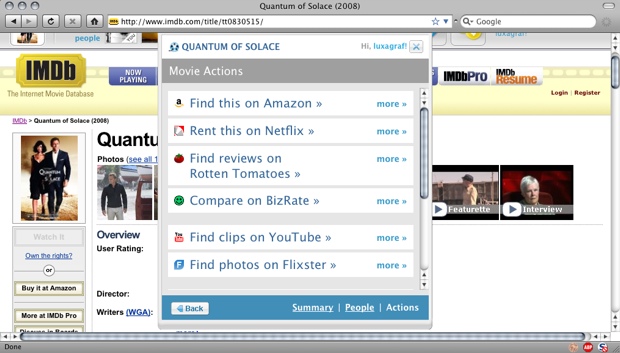

 In the last couple of weeks Facebook received and turned down a term sheet for a new $200 million venture round of funding that would value the company at $8 billion, we’ve learned from a source with direct knowledge of the proposed transaction. We’ve also heard that they’ve received at least one other term sheet that valued the company at $6 billion.
In the last couple of weeks Facebook received and turned down a term sheet for a new $200 million venture round of funding that would value the company at $8 billion, we’ve learned from a source with direct knowledge of the proposed transaction. We’ve also heard that they’ve received at least one other term sheet that valued the company at $6 billion.
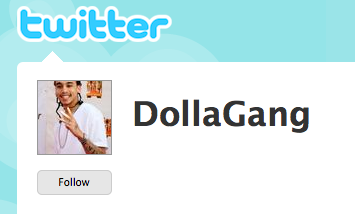 Here’s one of those stories that’s just kind of eerie and sad. About 13 hours ago, hip hop artist
Here’s one of those stories that’s just kind of eerie and sad. About 13 hours ago, hip hop artist 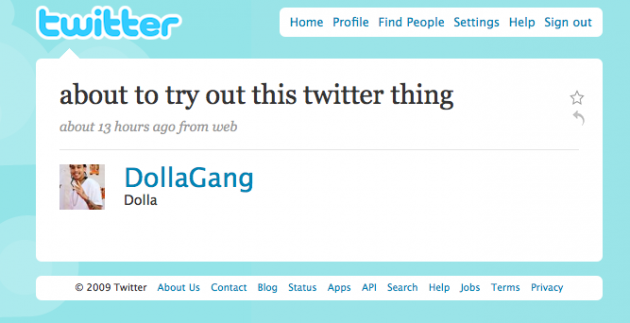
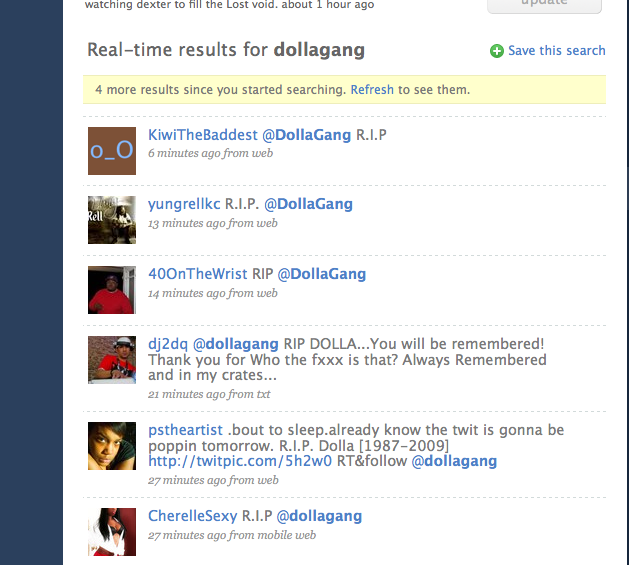
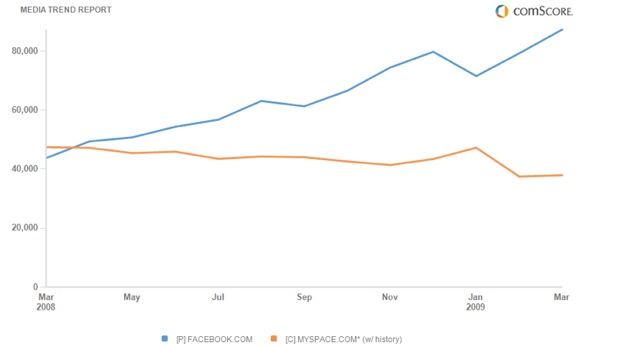
 When
When 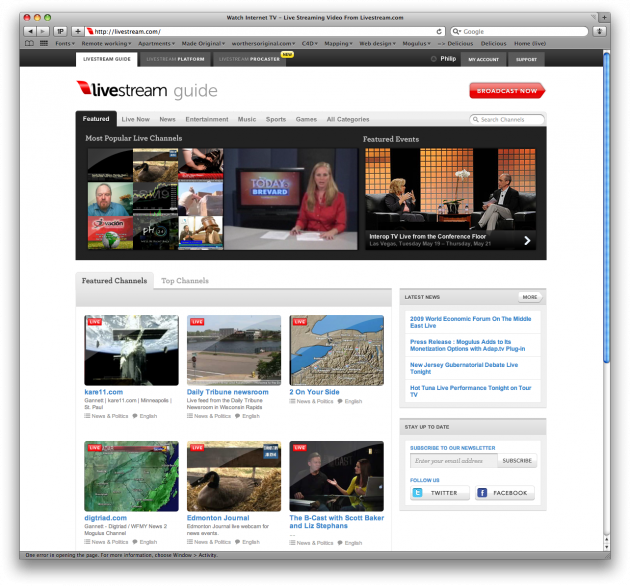
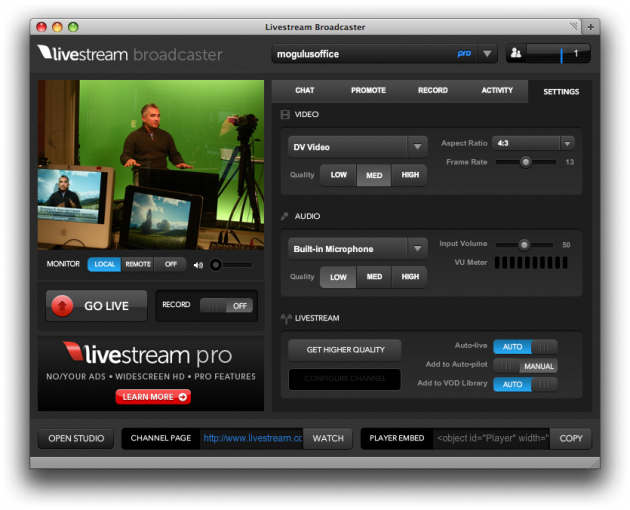


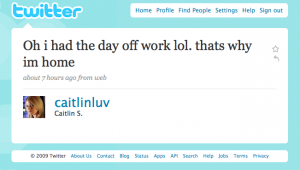 Around noon Pacific time today, a small
Around noon Pacific time today, a small 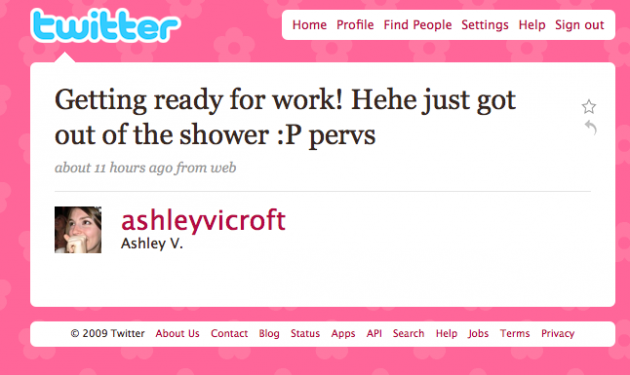



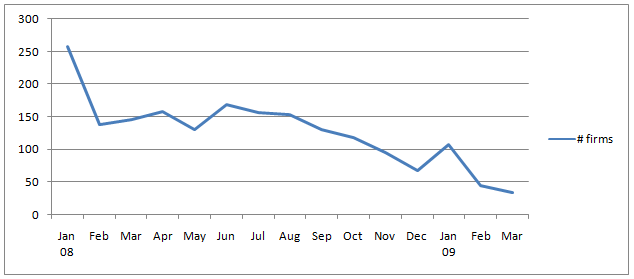

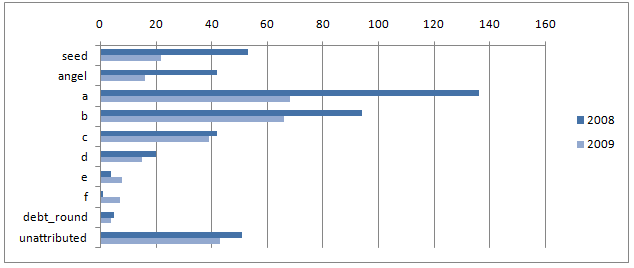
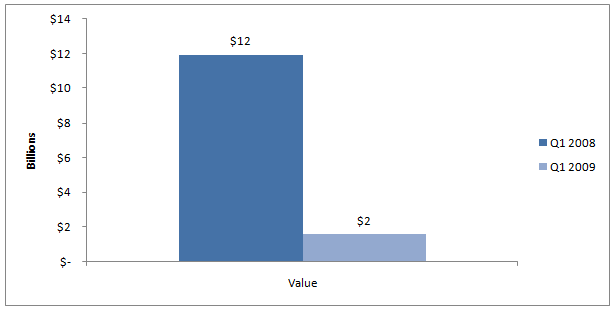
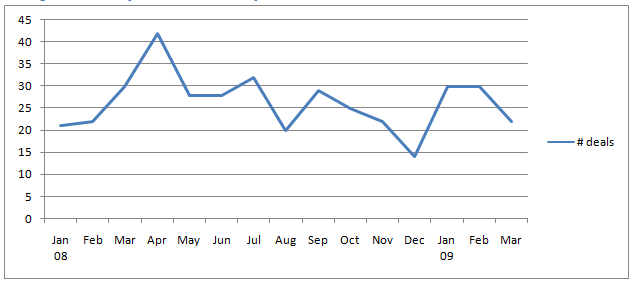


 Over the past few years, tabs have become one of those must-have features in a web browser. The mobile web is a bit different obviously, because the screen is so small, but some mobile browsers like mobile Safari give you the option to have multiple windows in which to browse. But let’s be honest, multiple windows are a pain, we want tabs. And with
Over the past few years, tabs have become one of those must-have features in a web browser. The mobile web is a bit different obviously, because the screen is so small, but some mobile browsers like mobile Safari give you the option to have multiple windows in which to browse. But let’s be honest, multiple windows are a pain, we want tabs. And with 

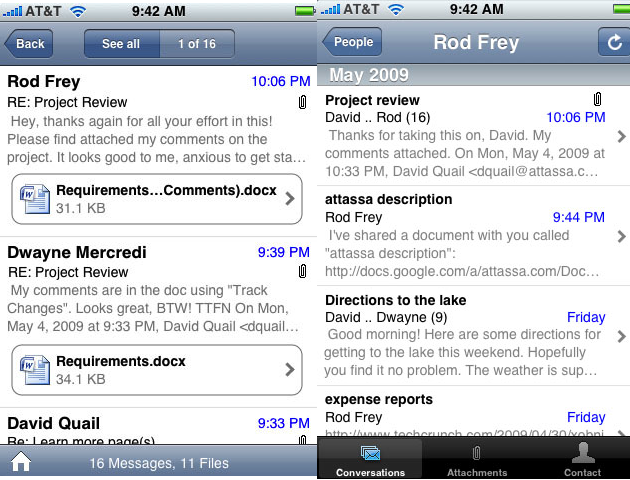
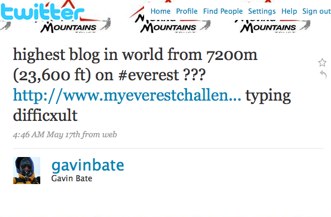
 South Carolina has the dubious distinction of being the first state to secede from the United States, in 1860. You could say that they had very strong feelings on the
South Carolina has the dubious distinction of being the first state to secede from the United States, in 1860. You could say that they had very strong feelings on the 


 Microsoft’s
Microsoft’s 
No comments:
Post a Comment